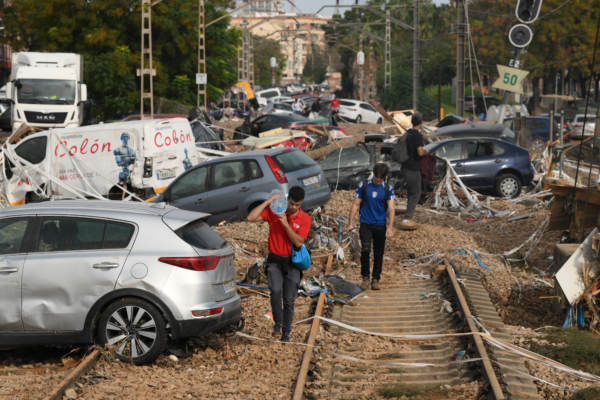As of Friday (November 1st), Spain has been hit by the most severe flooding in half a century in Europe, resulting in 205 deaths. Rescue workers have been forced to set up a temporary morgue in a conference center and are fully mobilized to reach areas still isolated from the outside world.
In the hard-hit eastern region of Valencia, local authorities have reported at least 202 fatalities, while Castilla-La Mancha and Andalusia have seen 3 deaths, according to Reuters.
The current death toll is almost on par with the 209 deaths caused by the 1970 floods in Romania, with the 1967 floods in Portugal resulting in nearly 500 deaths.
Approximately 500 soldiers have been deployed to search for the missing and assist survivors of the storm.
Minister Angel Victor Torres, responsible for coordinating with various regions in Spain, stated during a news conference on Thursday evening that the death toll may continue to rise as dozens of people are still missing.
About 75,000 households are still without electricity, and firefighters are extracting gasoline from abandoned cars during the floods to generate power and restore household supplies.
“We are going car by car to find any gasoline we can,” said a firefighter who traveled from Andalusia in the south to Valencia to assist in the rescue efforts, carrying plastic tubing and empty bottles to collect gasoline from the cars’ tanks.
On Tuesday, some areas of Valencia received a year’s worth of rain within 8 hours. The floods caused rivers to burst their banks, and roads, railways, and bridges were destroyed, leading to chain-reaction accidents on highways.
According to CNN, Valencia looked like an inland sea when viewed from space, with some areas now appearing to merge with the Balearic Sea. This heavy rainfall was triggered by a “cold drop” (DANA) weather system. In Chiva, west of Valencia, 19 inches of rain fell within 8 hours.
Spain is the world’s largest exporter of citrus fruits, and the Valencia region accounts for two-thirds of Spain’s total citrus production.

